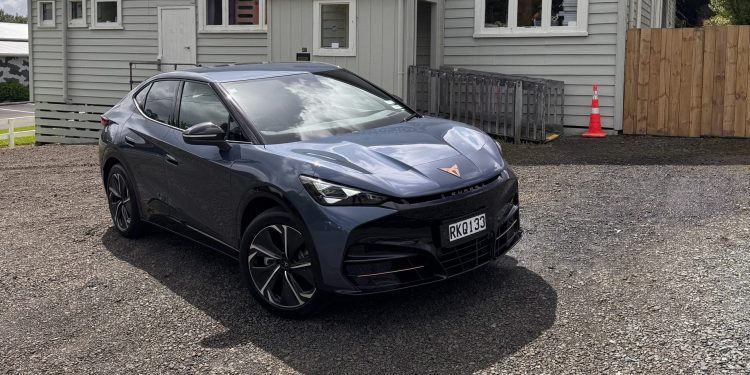Cupra Tavascan: Saving the best for last
Words: Richard Edwards
Cupra has never been shy about standing apart from the mainstream, and its first all-electric SUV, the Tavascan, is perhaps its most confident expression yet. It’s the final piece in the brand’s current lineup, a coupe-profiled EV SUV that aims to merge its brand of Spanish design with probably the most appliance-like of vehicle classes: the electric midsize SUV.
It is arguably a little late to the party. It sits on Volkswagen’s MEB electric platform, and so far everyone else in the group has had a taste of this segment: Volkswagen with the ID4 and ID5, Skoda with the Enyaq, and Audi with the Q4 e-tron. The Cupra completes the set.
For New Zealand, it arrives in two well-equipped variants: the rear-drive Tavascan V, priced at $89,900, and the all-wheel-drive Tavascan VZ, at $109,900. Those prices put it very much at the edge of premium.
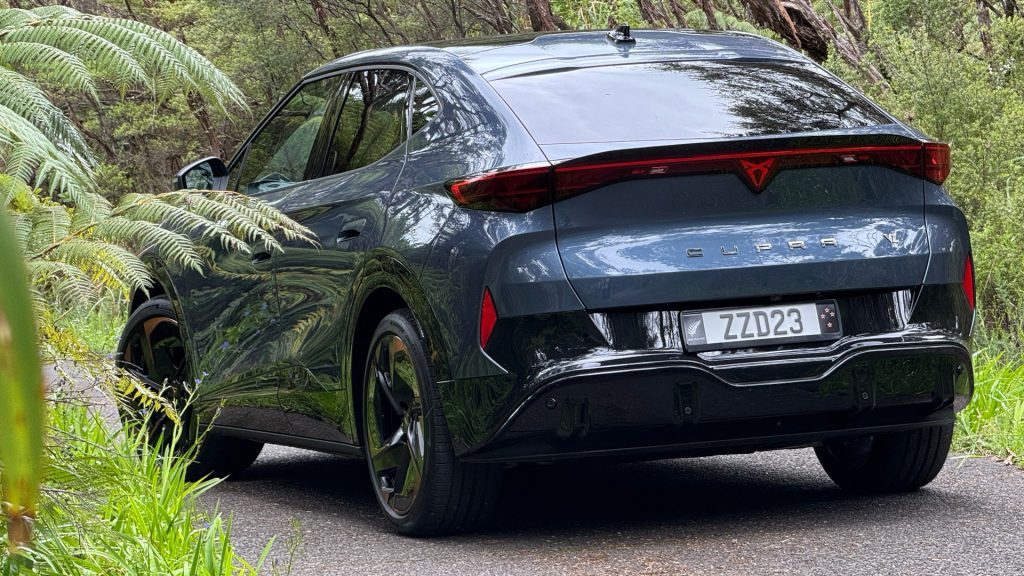
Design & Interior
In a sea of rational-looking electric crossovers, the Tavascan takes a dramatically different path. The front end is dominated by triangular LED headlamps that form a sharp V-shape around an illuminated copper logo, a first for the brand. Aerodynamic openings channel air around the front wheels to cut turbulence, while a drag coefficient of 0.26 is lower than most SUVs and even some sports cars.
Viewed in profile, the Tavascan’s 4.76-metre length and 2.76-metre wheelbase give it taut, athletic proportions. Subtle sculpting along the sides echoes the airflow itself. Cupra says it is using the Coandă effect to guide air toward the integrated rear spoiler and diffuser to enhance stability. Yes, a rear diffuser on an SUV. Even with the laid-back shape, the boot is still impressive at 540 litres, while rear seat space is reasonable considering the sloping roofline.
At the rear, a coast-to-coast light bar and glowing Cupra logo emphasise width. The detailing on the lights, and for that matter the whole car, is pretty impressive.
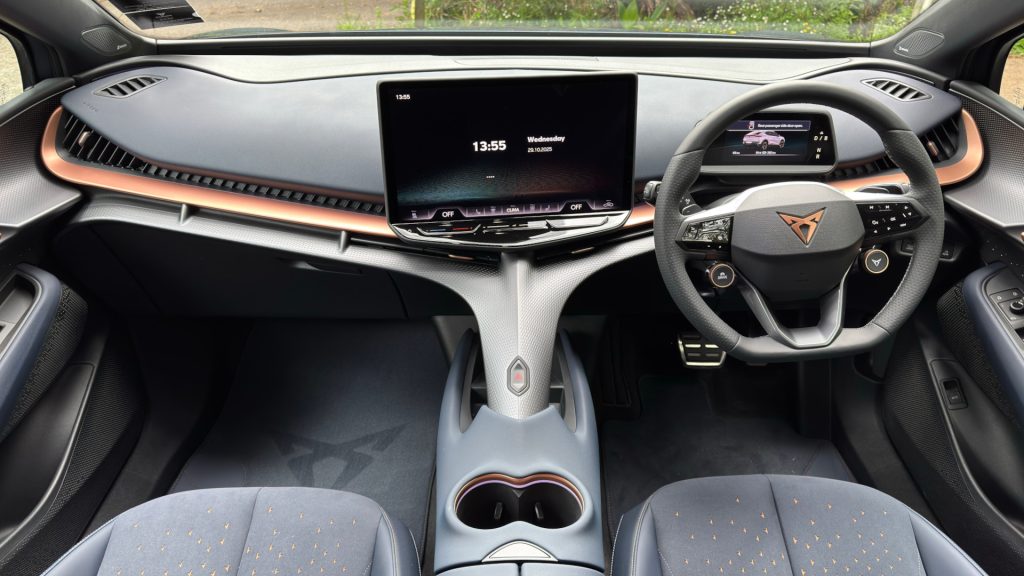
Inside, the cabin continues that design-led narrative. A floating dashboard sits above a sculptural central spine, the visual backbone of the interior, and there’s a signature copper-coloured blade stretching across the fascia. Standard bucket seats finished in recycled Dark Knight microfibre set the tone for a sporty, driver-centric space. They are sporty-looking but relatively pliable side bolsters mean they don’t feel uncomfortable for those of us of wider proportions, and both front seats are 12-way electrically adjustable and heated.
Lighting plays a key role. Strips in the dash, doors, and around the cupholders adjust to driving modes or warn of hazards.
Both models feature a panoramic glass roof and a 15-inch infotainment screen running Cupra’s latest software. The controversial haptic steering-wheel controls remain, though they’re now backlit and more responsive than before. Audio is handled by a bespoke 12-speaker Sennheiser system, tuned specifically for the Tavascan’s interior shape.
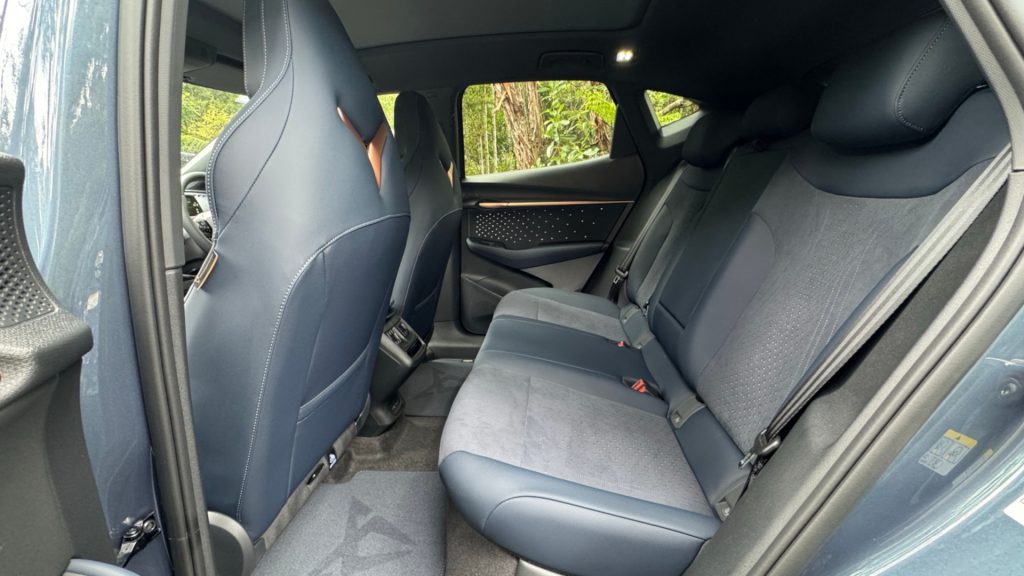
Performance & Range
Built on the Volkswagen Group’s familiar MEB platform, the Tavascan shares its foundations with the VW ID.4 and Skoda Enyaq, but Cupra insists this one is tuned to deliver a very different feel. Both models use a 77 kWh (net) lithium-ion battery feeding a 135 kW DC and 11 kW AC charging system.
The Tavascan V sends 210 kW and 545 Nm to the rear wheels, good for 0–100 km/h in 6.8 seconds and up to 534 km of WLTP range. The VZ adds a front motor for 250 kW combined, trimming the sprint to 5.5 seconds and offering 499 km of range.
Cupra’s adaptive DCC suspension is standard on the VZ, while both versions feature adjustable drive modes: Range, Comfort, Sport, and Cupra. Regenerative braking can be modulated via the paddle shifters, and there’s a traction setting that simulates an all-wheel-drive lock for low-grip conditions.
Towing capacity sits at 1000 kg for the rear-drive model and 1200 kg for the AWD VZ, useful but not class-leading.
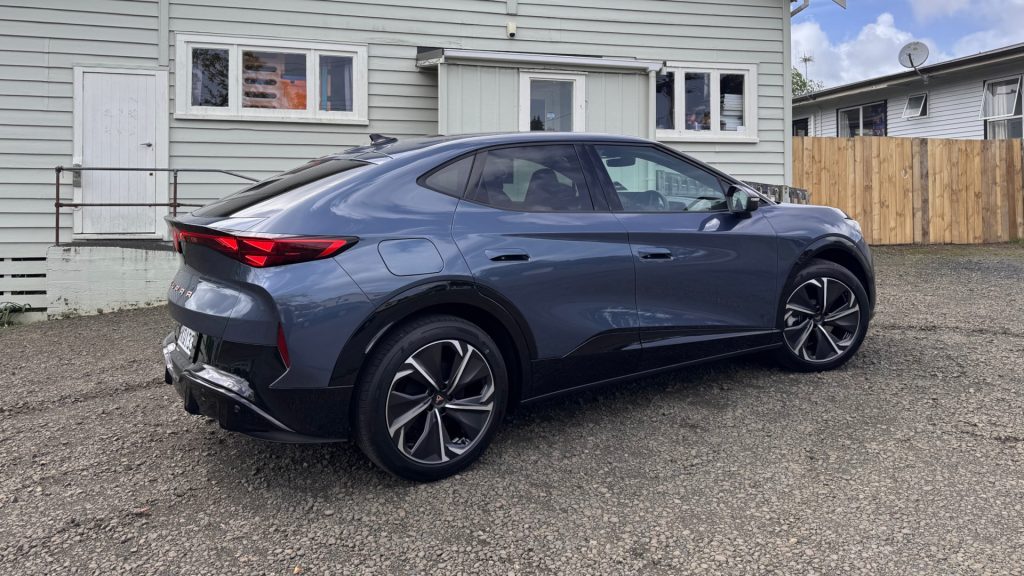
On the Road
Settling into the driver’s seat reveals what Cupra means by driver-first design. The seating position is low and supportive, visibility is good, and that sculpted spine subtly separates driver and passenger. The 12-way electric seats are superb: heated, memory-equipped, and shaped to hold you through corners without feeling confining.
Around town, the Tavascan glides quietly, though ride quality remains on the firm side even in Comfort mode. That’s the price of its sporty setup and 20- or 21-inch wheels, which look fantastic but transmit a little of Auckland’s patched-up asphalt into the cabin.
Dial up Cupra mode and the character changes. Steering gains weight, the adaptive dampers tense, and a subtle synthetic warble plays through the speakers. It’s quick rather than blistering. The car’s balance is excellent, and unlike some EVs that feel heavy, the Tavascan loves to turn in, its weight distributed evenly between the axles. Even the base rear-drive version retains Cupra’s trademark liveliness, making it arguably more engaging than the heavier AWD.
Noise suppression is decent. On coarse-chip surfaces, wind intrusion is minimal, a benefit of that slippery shape, but there is a little tire rumble. And to credit the cars built in Anhui, China — not a groan, creak or rattle was heard.
The regenerative braking paddles work fine, though stronger regen or even one-pedal driving would be nice.
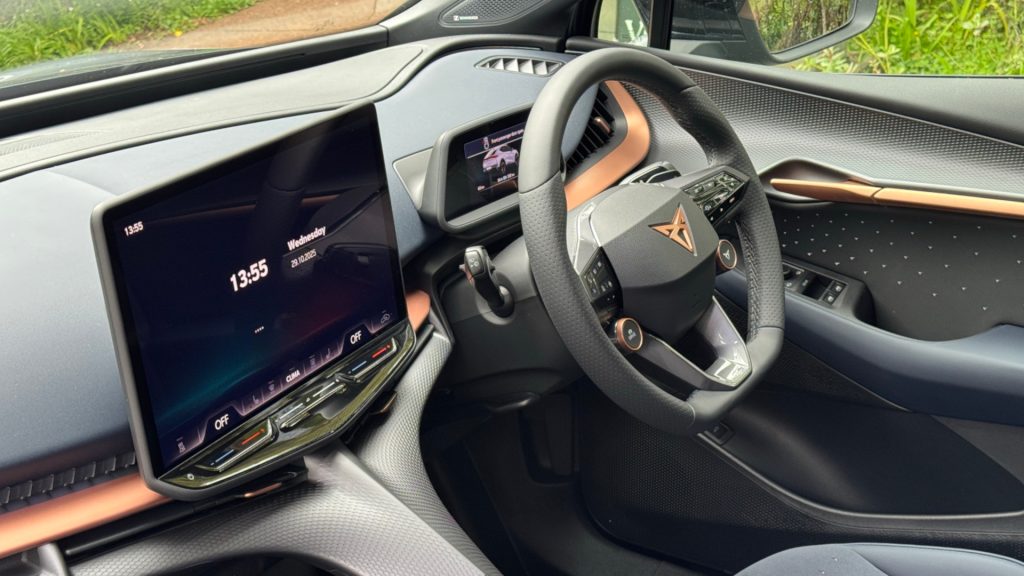
Appropriate Assistance
If there is an area where the Tavascan deserves a strong compliment it is with its driver assistance features. It has the usual extensive list of items needed these days, with perhaps the exception of traffic sign recognition, but here is the key point: they all work well without annoying. Alerts for lane warnings are muted and pragmatic, and even the driver attention system takes a solid approach. It rarely calls you out in normal situations, the only one being if you interact with the touch screen too long. Rather than blaring an alert it blocks the screen for a few seconds to divert your attention back to the road.
The car carries an ANCAP four-star rating. It crashed well, but the lack of that speed alert system dropped it out of contention for a full five stars.
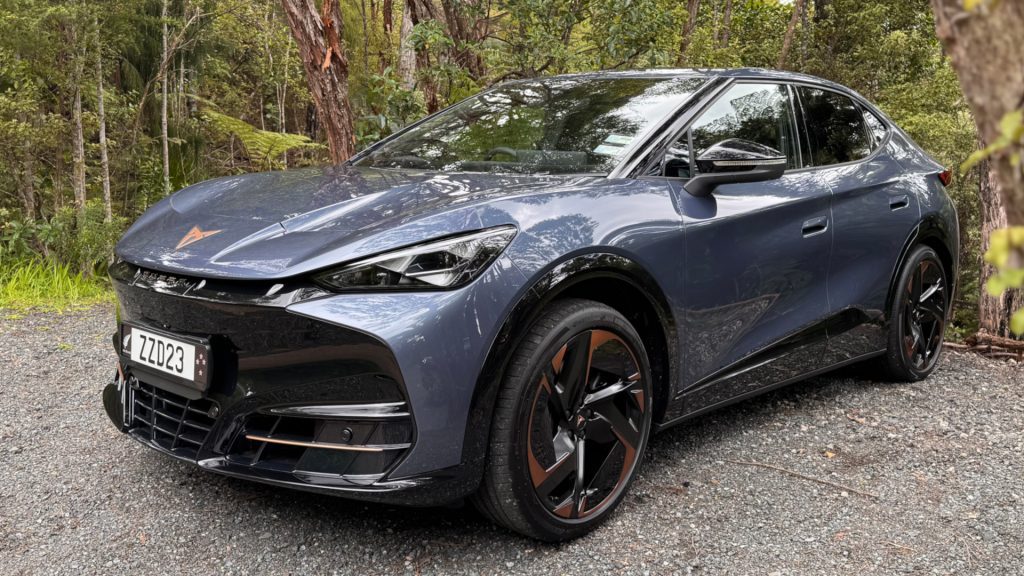
Verdict
Cupra describes the Tavascan as a car for those who “get it,” and that might be the best summary. Where the Volkswagen ID.4 feels practical and the Skoda Enyaq mature, the Cupra is the extrovert of the family, trading a little comfort for a lot of character. The brand sees it as a potential competitor not so much for mainstream EV options, but for those looking at the likes of the BMW iX2 and Mini Countryman EV. Surely Audi Q4 buyers would need to be cross-shopped, while the BYD Sealion 7 offers more of everything but style and dynamics for a lower price.
At $89,900 to $109,900, it’s not cheap, and buyers cross-shopping it against the Tesla Model Y Performance will notice that the Tesla is both quicker and cheaper. Yet the Tavascan offers something Tesla doesn’t: individuality, warmth, and a sense that someone obsessed over every copper detail.


